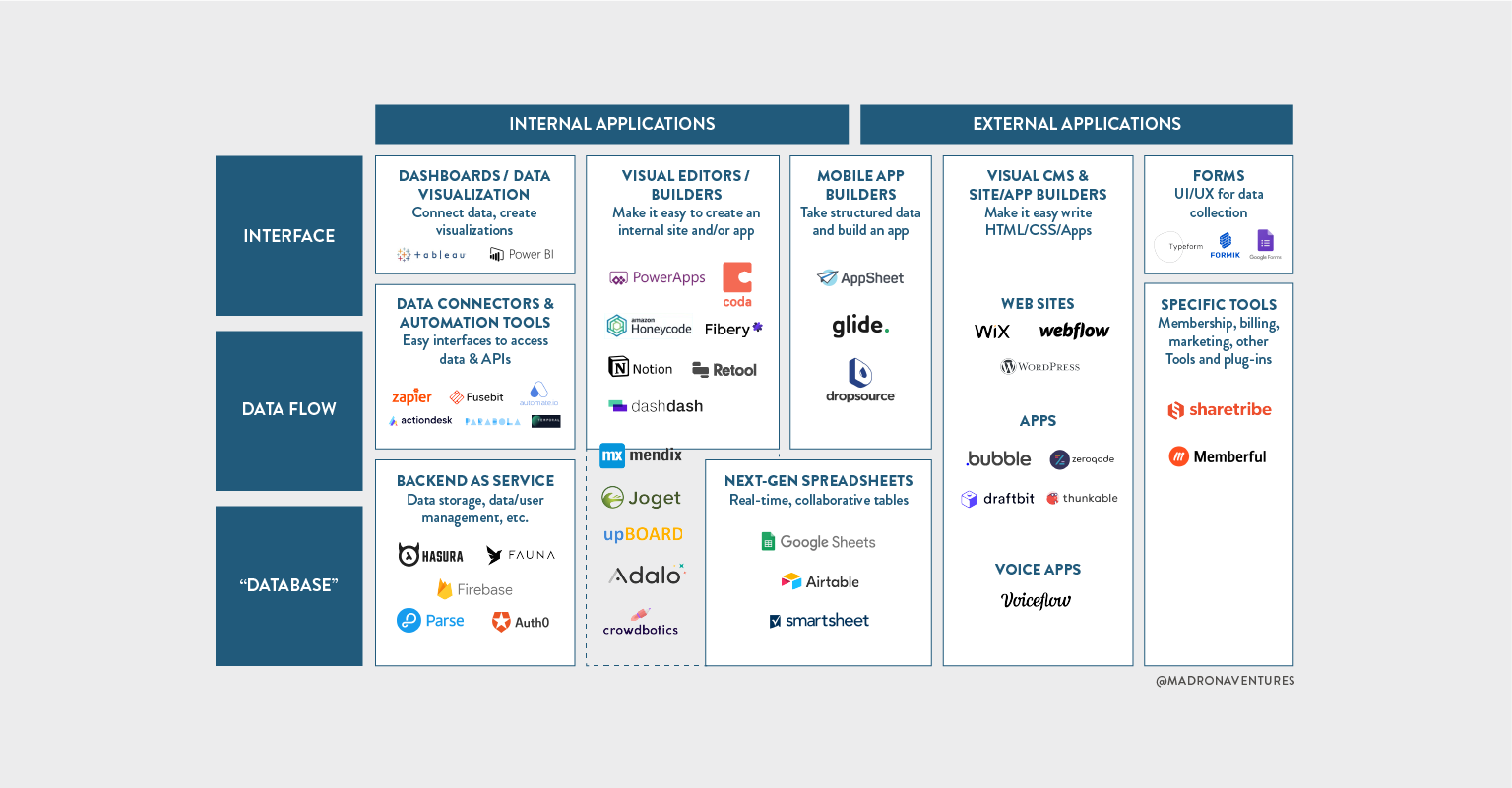Simplify Open Platform Data Source Production with No-Code Advancement Operatings Systems
Simplify Open Platform Data Source Production with No-Code Advancement Operatings Systems
Blog Article
Discover How Scalable Data Sources Can Be Used Without Coding to Improve Your Company Workflow
In today's busy organization setting, the capability to manage and assess information effectively is critical. no-code. Scalable databases, specifically when combined with no-code options, use a transformative strategy that equips non-technical customers to improve procedures.
Recognizing Scalable Databases
Scalable databases are essential for modern-day service operations, permitting organizations to effectively manage boosting volumes of information without compromising performance. These databases are developed to expand and adapt to the altering needs of an organization, making sure that they can handle larger datasets and more complicated inquiries as business needs advance.
Comprehending scalable data sources includes acknowledging their 2 main kinds: vertical scaling and horizontal scaling. Vertical scaling, or "scaling up," entails including even more power (CPU, RAM) to an existing web server to improve efficiency. On the other hand, horizontal scaling, or "scaling out," entails adding more web servers to distribute the lots, which usually results in greater flexibility and fault tolerance.
An additional crucial element is the architecture of scalable databases, which can be either relational or non-relational. Relational data sources, such as MySQL and PostgreSQL, are structured and utilize SQL for queries, while non-relational databases, like MongoDB and Cassandra, offer more adaptability with disorganized data.
Inevitably, recognizing scalable data sources is vital for organizations intending to utilize information as a tactical property, allowing them to stay competitive in an increasingly data-driven setting.

Benefits of No-Code Solutions
Unlocking the possibility of no-code services equips companies to streamline operations and enhance productivity without the requirement for considerable programming knowledge. These platforms enable non-technical customers to create, modify, and manage data sources easily, therefore equalizing accessibility to innovation throughout groups.
Among the key benefits of no-code options is their speed of execution. Companies can rapidly release applications and automate processes, substantially minimizing the time spent on advancement cycles. This agility allows companies to react promptly to market changes and consumer demands, cultivating an affordable edge.
Additionally, no-code platforms decrease reliance on IT departments for everyday jobs, allowing technical groups to concentrate on even more complex jobs that require specialized abilities. This shift not only maximizes resource allotment yet likewise advertises innovation within the company.
Cost-effectiveness is another advantage, as no-code solutions can lower growth and upkeep expenses. By minimizing the demand for coding know-how, business can harness the capacities of their existing workforce without the overhead of hiring extra workers.
Popular No-Code Database Tools
The surge of no-code remedies has actually resulted in the development of numerous data source tools that satisfy services looking for effectiveness and access. These devices encourage customers with restricted technical know-how to produce, handle, and control data sources perfectly.

Caspio stands out for its capability to construct web applications with no coding. It permits companies to develop robust databases and deploy applications swiftly, providing to various market needs. Similarly, Propensity supplies effective data and user-friendly user interfaces management abilities, allowing organizations to build custom-made applications customized to their workflows.

Usage Situations in Organization Operations
Just how can companies utilize data source tools to boost their procedures? Scalable databases provide companies with powerful capacities to take care of and examine data without the demand for extensive coding understanding. These tools can enhance different company procedures, ultimately leading to enhanced efficiency and performance.
One noticeable usage situation is customer relationship administration (CRM) Companies can make use of scalable databases to track consumer communications, choices, and comments, making it possible for customized interaction and better solution. By systematizing this info, teams can collaborate extra effectively and reply to client requirements in real-time.
One more significant application is inventory administration. Business can use no-code database tools to monitor stock degrees, track deliveries, and forecast need. This makes sure optimal inventory levels, decreases waste, and minimizes stockouts.
Additionally, job monitoring can gain from scalable data sources by permitting teams to manage tasks, deadlines, and resources in a combined system. With real-time updates and information visualization, job managers can make enlightened decisions.
Starting With Application
Executing scalable databases in organization operations needs a structured approach to make sure effective assimilation and usage. The very first step is to perform an extensive needs assessment, recognizing specific business demands, information kinds, and anticipated growth patterns. This fundamental understanding will certainly lead the selection of the proper data source solution.
Following, select an easy to use, no-code database platform that lines up with your functional objectives. no-code. Numerous modern options use intuitive interfaces, enabling non-technical users to manage information effectively. After selecting a platform, establish a clear data architecture that describes just how information will certainly be arranged, accessed, and kept
Training is vital; make sure that staff member are equipped with the necessary abilities to make use of Visit This Link the database. Take into consideration offering workshops or tutorials to familiarize team with the system's functionalities.
Verdict
In conclusion, the integration of scalable databases via no-code solutions presents substantial benefits for business procedures. These platforms encourage non-technical customers to effectively take care of and examine information, promoting enhanced decision-making and collaboration. By embracing tools such as Airtable and Notion, organizations can streamline procedures and minimize reliance on IT resources. Ultimately, leveraging these technologies can result in improved productivity and functional performance, positioning services for sustained development in a competitive landscape.
One preferred no-code database tool is Airtable, which integrates the functionality of a spread sheet with the power of a data source.Exactly how can businesses utilize data source tools to boost their operations? Services can make use of scalable databases to track client interactions, preferences, and comments, allowing individualized interaction and far better solution.Carrying out scalable databases in business click over here operations requires a structured technique to make certain effective integration and utilization.In conclusion, the combination of scalable data sources through no-code options provides significant advantages for company operations.
Report this page